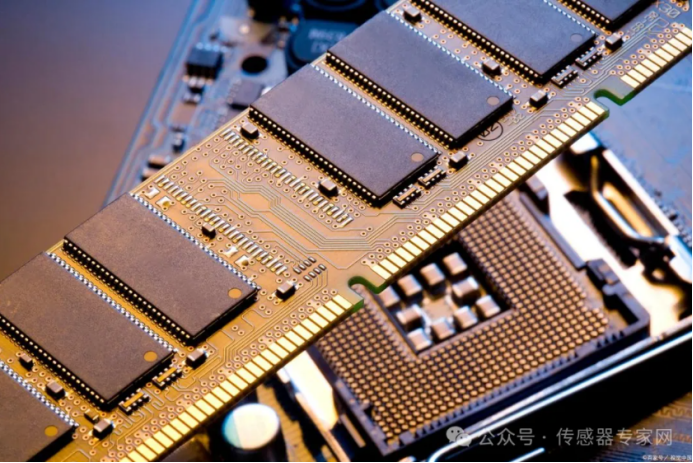In the context of rapid development of modern technology, sensors, as important tools for sensing external information, have become the key to ensuring sensor performance and improving system reliability through their packaging technology. Sensor packaging is not only a process of protecting the internal chips of sensors from external environmental influences, but also an important link in determining sensor performance, service life, and application scenarios. In recent years, with the vigorous development of fields such as the Internet of Things, intelligent manufacturing, and smart homes, sensor packaging technology has also been constantly innovating and breaking through, moving towards miniaturization, high reliability, and low cost.

The Development and Importance of Sensor Packaging Technology
Sensor packaging technology originated from integrated circuit (IC) packaging, but compared to it, sensor packaging is more complex, with more process requirements and structural characteristics. Due to the fact that sensors typically require direct contact with the object being measured, the working environment may involve harsh conditions such as high temperature, high pressure, high corrosion, high humidity, strong radiation, strong impact, and strong vibration. Therefore, sensor packaging not only ensures the safe and stable operation of electronic components, but also guarantees the normal and stable operation of functional structural components. This means that sensor packaging needs to simultaneously meet multiple requirements such as electrical connections, structural protection, and environmental interfaces.
With the continuous development of MEMS (Micro Electro Mechanical Systems) technology, sensor packaging technology has also undergone revolutionary changes. MEMS sensors, by integrating microelectronics technology with mechanical engineering, have achieved mechanical structural systems with feature scales at the micro nano level, thus possessing higher sensitivity and a wider range of application scenarios. However, the three-dimensional mechanical structure and diverse product design and manufacturing technologies of MEMS sensors also pose greater challenges to packaging. How to improve the reliability and stability of sensors while ensuring controllable packaging costs has become an important direction for the development of sensor packaging technology.
Key challenges and innovations in sensor packaging technology
The key challenges of sensor packaging technology are mainly reflected in the following aspects: firstly, the selection of packaging materials and processes, which need to simultaneously meet the requirements of electrical performance, mechanical performance, and chemical stability; The second is to optimize the packaging structure to improve the sensor's resistance to impact, vibration, corrosion, and other capabilities; The third is the control of the packaging process to ensure packaging quality and consistency; The fourth is the testing and verification after packaging to ensure the performance and reliability of the sensor in practical applications.
To address these challenges, sensor packaging technology is constantly innovating. On the one hand, by using new packaging materials such as ceramics, titanium alloys, and other high-strength and radiation resistant materials, as well as low drift and low-noise packaging materials, the stability and reliability of the sensor have been improved. On the other hand, by optimizing the packaging structure, such as using advanced packaging technologies such as wafer level packaging (WLP) and ball grid array packaging (BGA), the miniaturization and integration of sensors have been achieved, improving packaging efficiency and reliability. In addition, by introducing advanced packaging processes such as vacuum packaging technology, low-pressure injection molding technology, etc., the durability and reliability of the sensor have been further improved.
Application and Future Prospects of Sensor Packaging Technology
The application scope of sensor packaging technology is wide, covering multiple fields such as aerospace, military defense, industrial automation, medical health, consumer electronics, etc. In the aerospace field, sensor packaging technology needs to meet stability and reliability requirements in extreme environments to ensure the normal operation of spacecraft in space. In the field of military defense, sensor packaging technology needs to have high impact resistance and anti-interference capabilities to ensure the stable operation of military equipment in complex environments. In the field of industrial automation, sensor packaging technology needs to have characteristics such as dust-proof, waterproof, and corrosion-resistant to adapt to harsh industrial environments such as factories and mines. In the field of healthcare, sensor packaging technology needs to have characteristics such as biocompatibility and sterilization tolerance to ensure the normal operation of sensors inside and outside the human body. In the field of consumer electronics, sensor packaging technology needs to meet the requirements of miniaturization, integration, and low cost to adapt to the compact design needs of consumer electronic devices.
In the future, with the continuous development of fields such as the Internet of Things, intelligent manufacturing, and smart homes, sensor packaging technology will usher in broader application prospects. On the one hand, sensor packaging technology will place greater emphasis on miniaturization and integration to meet the demands of IoT devices for sensor miniaturization and low power consumption. On the other hand, sensor packaging technology will place greater emphasis on reliability and stability to meet the requirements of high-precision and long-term stable operation of sensors in fields such as smart manufacturing and smart homes. In addition, with the continuous emergence of new materials, processes, and technologies, sensor packaging technology will also continue to innovate and break through, providing strong support for the improvement of sensor performance and the expansion of application fields.
Sensor packaging technology, as a key link in ensuring sensor performance and improving system reliability, plays an increasingly important role in the development of modern technology. With the continuous development of MEMS technology and the booming rise of fields such as the Internet of Things, sensor packaging technology is constantly moving towards miniaturization, high reliability, and low cost. In the future, sensor packaging technology will continue to innovate and break through, providing strong support for the improvement of sensor performance and the expansion of application fields, and promoting the continuous development of modern technology.
Source: Sensor Expert Network. If there is any infringement, please contact us for deletion



